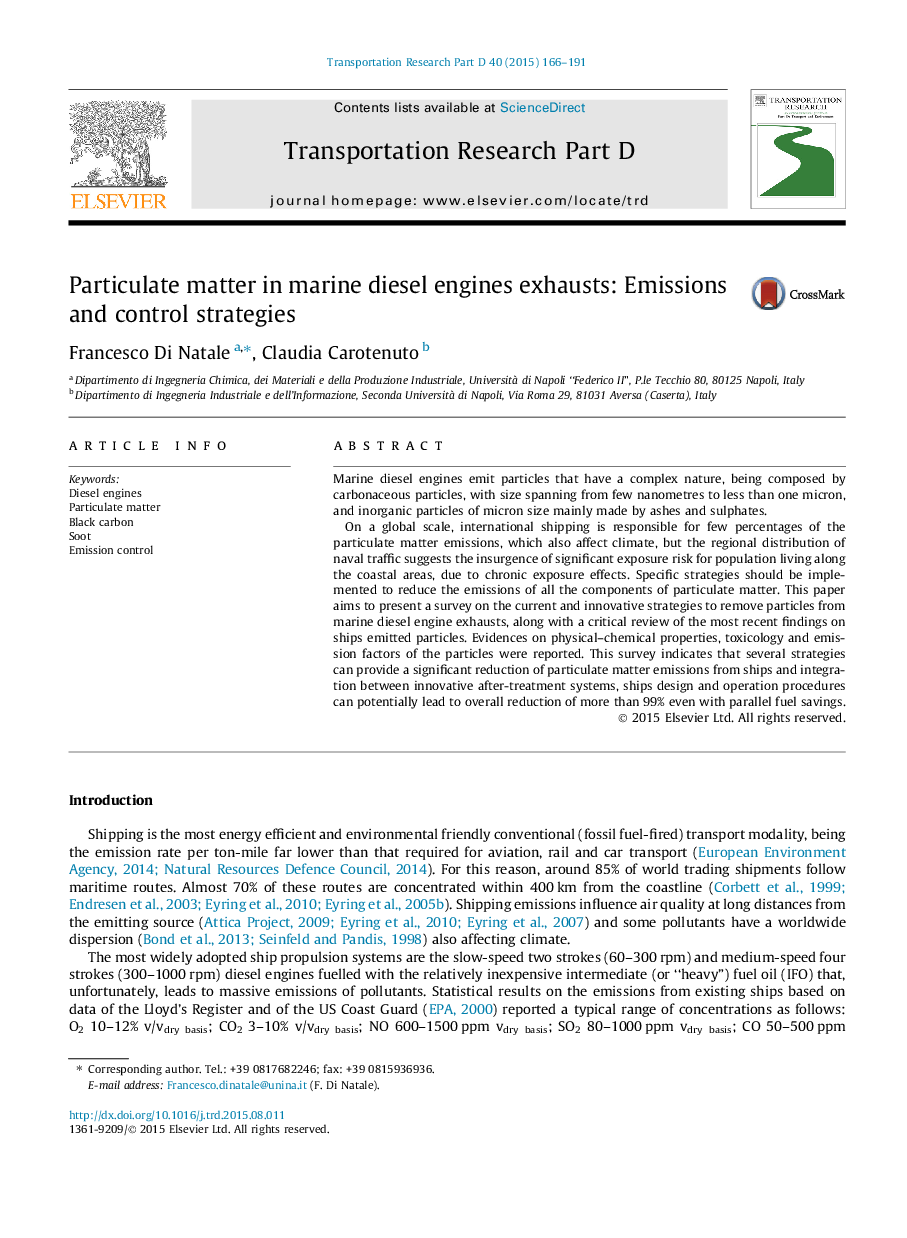| کد مقاله | کد نشریه | سال انتشار | مقاله انگلیسی | نسخه تمام متن |
|---|---|---|---|---|
| 1065684 | 1485883 | 2015 | 26 صفحه PDF | دانلود رایگان |
• We studied ships emissions of particles and all the proposed reduction strategies.
• Particles emitted by ships are toxic and their emissions are largely uncontrolled.
• Ships emissions affect the air quality in port cities and coastal areas.
• Control strategies must take into account all the different fractions of particles.
• Techniques to reduce ultrafine particles are now becoming commercially available.
Marine diesel engines emit particles that have a complex nature, being composed by carbonaceous particles, with size spanning from few nanometres to less than one micron, and inorganic particles of micron size mainly made by ashes and sulphates.On a global scale, international shipping is responsible for few percentages of the particulate matter emissions, which also affect climate, but the regional distribution of naval traffic suggests the insurgence of significant exposure risk for population living along the coastal areas, due to chronic exposure effects. Specific strategies should be implemented to reduce the emissions of all the components of particulate matter. This paper aims to present a survey on the current and innovative strategies to remove particles from marine diesel engine exhausts, along with a critical review of the most recent findings on ships emitted particles. Evidences on physical–chemical properties, toxicology and emission factors of the particles were reported. This survey indicates that several strategies can provide a significant reduction of particulate matter emissions from ships and integration between innovative after-treatment systems, ships design and operation procedures can potentially lead to overall reduction of more than 99% even with parallel fuel savings.
Journal: Transportation Research Part D: Transport and Environment - Volume 40, October 2015, Pages 166–191
